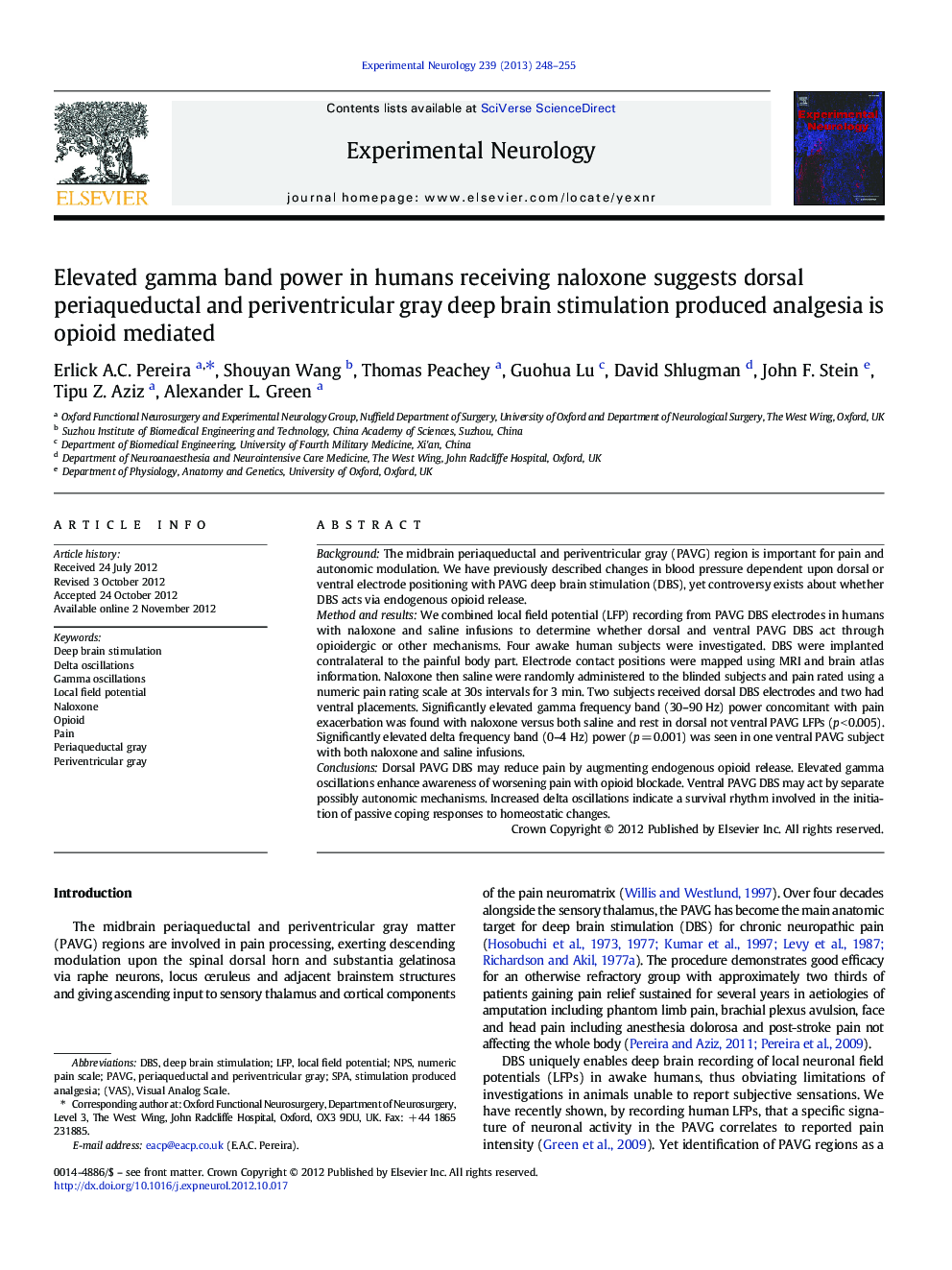| کد مقاله | کد نشریه | سال انتشار | مقاله انگلیسی | نسخه تمام متن |
|---|---|---|---|---|
| 6018514 | 1580193 | 2013 | 8 صفحه PDF | دانلود رایگان |
BackgroundThe midbrain periaqueductal and periventricular gray (PAVG) region is important for pain and autonomic modulation. We have previously described changes in blood pressure dependent upon dorsal or ventral electrode positioning with PAVG deep brain stimulation (DBS), yet controversy exists about whether DBS acts via endogenous opioid release.Method and resultsWe combined local field potential (LFP) recording from PAVG DBS electrodes in humans with naloxone and saline infusions to determine whether dorsal and ventral PAVG DBS act through opioidergic or other mechanisms. Four awake human subjects were investigated. DBS were implanted contralateral to the painful body part. Electrode contact positions were mapped using MRI and brain atlas information. Naloxone then saline were randomly administered to the blinded subjects and pain rated using a numeric pain rating scale at 30s intervals for 3 min. Two subjects received dorsal DBS electrodes and two had ventral placements. Significantly elevated gamma frequency band (30-90 Hz) power concomitant with pain exacerbation was found with naloxone versus both saline and rest in dorsal not ventral PAVG LFPs (p < 0.005). Significantly elevated delta frequency band (0-4 Hz) power (p = 0.001) was seen in one ventral PAVG subject with both naloxone and saline infusions.ConclusionsDorsal PAVG DBS may reduce pain by augmenting endogenous opioid release. Elevated gamma oscillations enhance awareness of worsening pain with opioid blockade. Ventral PAVG DBS may act by separate possibly autonomic mechanisms. Increased delta oscillations indicate a survival rhythm involved in the initiation of passive coping responses to homeostatic changes.
⺠Human periaqueductal gray (PAG) function was studied by deep brain local field potentials. ⺠Gamma band power and pain were enhanced in dorsal PAG with naloxone infusion. ⺠Delta band power was elevated in ventral PAG by both naloxone and saline. ⺠Dorsal opioidergic and ventral non-opoioidergic analgesic streams are hypothesised in PAG.
Journal: Experimental Neurology - Volume 239, January 2013, Pages 248-255
